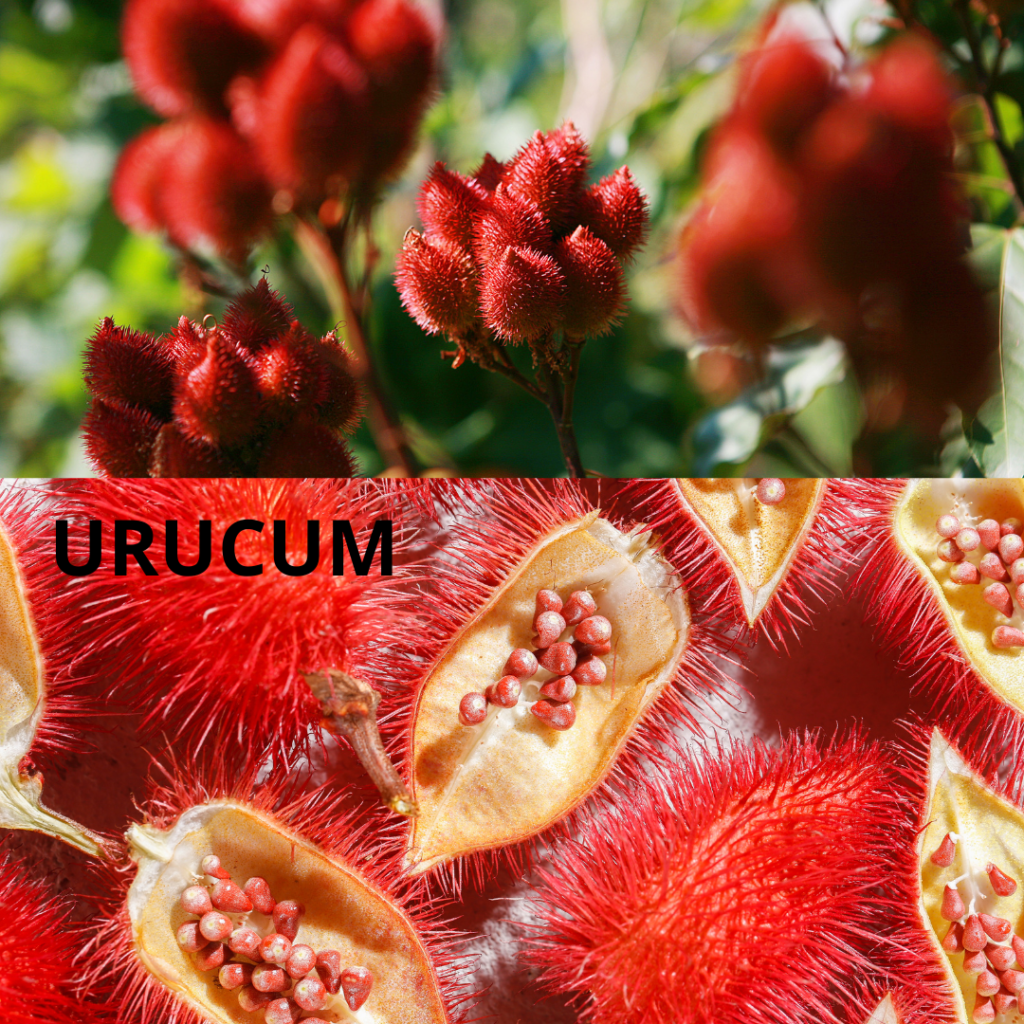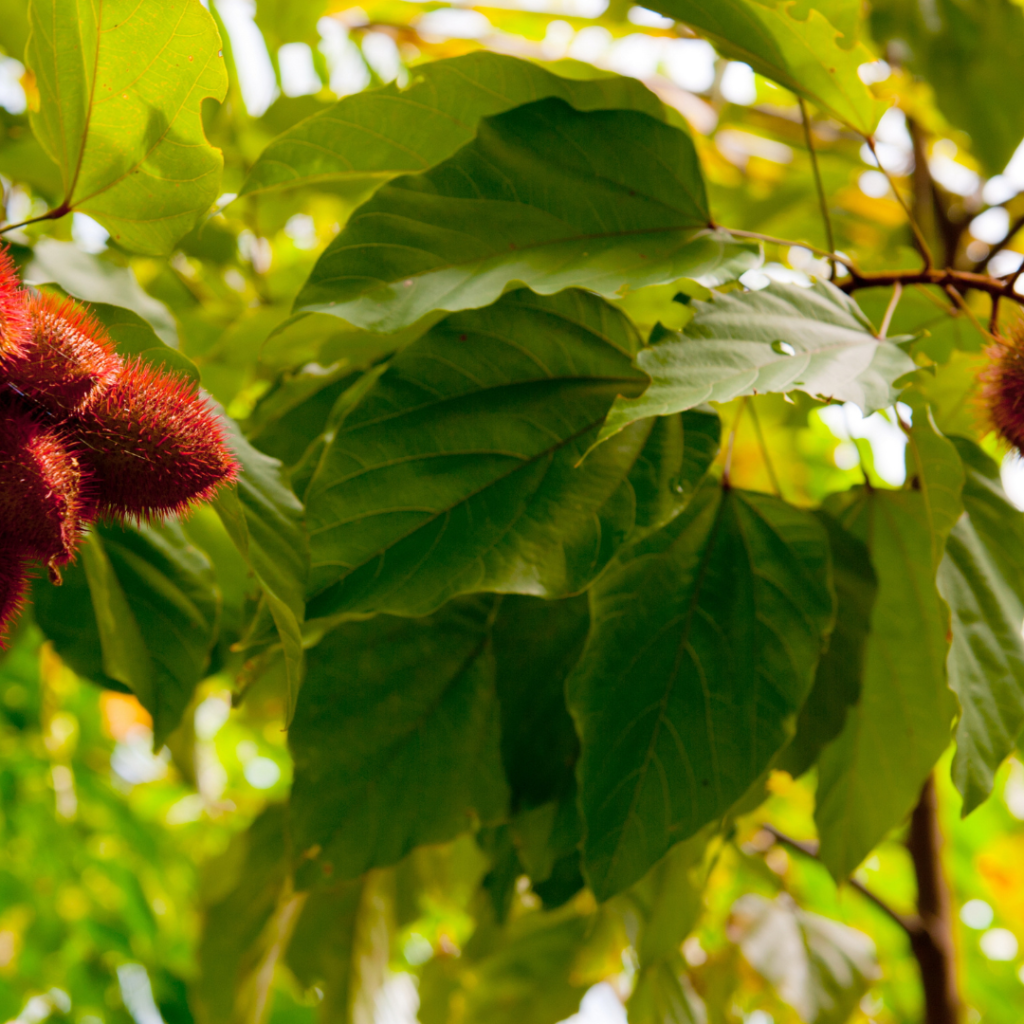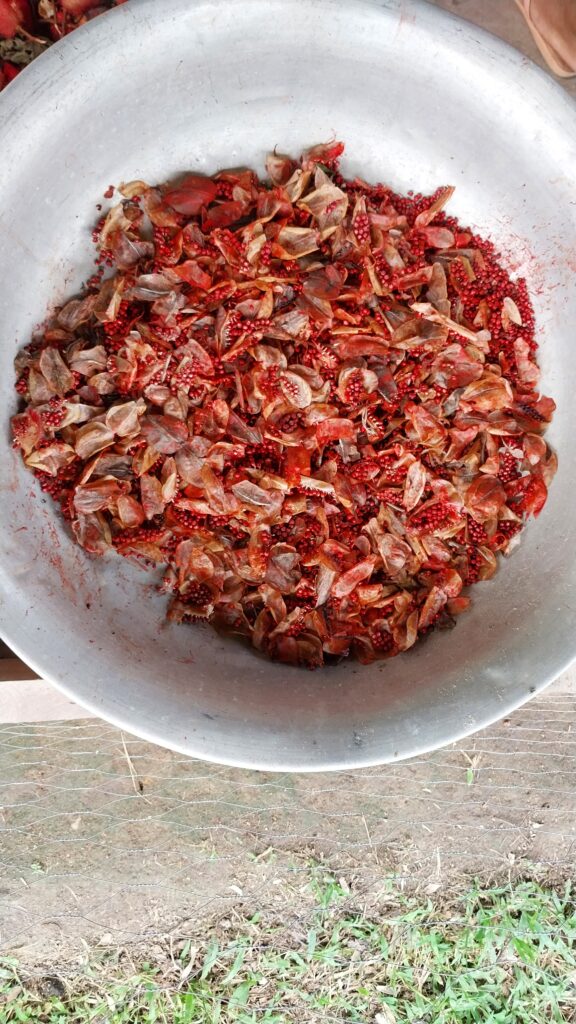

Recently, urucum seeds were collected in the Kaarimã village for the production of seedlings for the medicinal herb garden. The medicinal herb garden is part of the project of the Center for Traditional Medicine that is in the planning stage. Thus, it is worth pointing out that urucum is a raw material used by the native peoples of America, being one of the first natural dyes to be exported from Brazil to Europe. Its name comes from the Tupi-Guarani and means “red”, doing justice to its color. In its various forms and uses, it is also part of traditional medicine and contains benefits, being used as a healing, diuretic, reduces cholesterol, helps with respiratory problems, protects against UVA and UVB rays, and is also a natural repellent. The urucum is a typical fruit of the tropical forest and its tree, of the species Bixa orellana, can reach up to 6 meters in height, being common in the daily life of indigenous people. The ink extracted from the seed can be made directly from the fruit with the help of water or vegetable oils, however, it can also go through a cooking process after which it becomes a paste, which is later separated into round pieces, having a long durability, and can be used several times also with the help of water and oils. Finally, the urucum ink extracted in this way is used for body painting also in times of celebration. The traditional communities use this fruit and its reddish color to produce natural dye, which is also used as seasoning in their meals and to dye fabrics for making bags and clothes.


